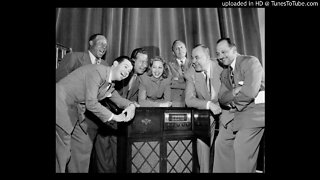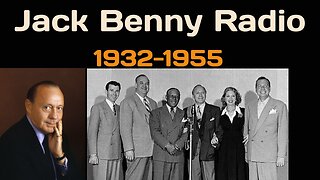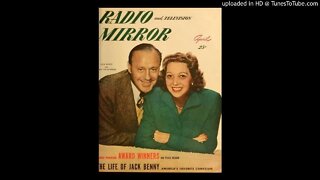Witless Twit Nitwit Skit Fix Quick Tip of the Day (Ft. Stogie and Stacy)
In this skit, the Nitwit Skit Fix-It Guy first attempts to make the skit less “nitwitty;” however, rather than changes Stacy’s responses, in true witless fashion, he starts at the wrong end; he changes Stogie’s lines. Note Stacy’s lines are almost exactly the same in both sketches. Thus, the first sketch has Stacy misunderstanding the statement, while the second sketch has “corrected” Stacy’s misunderstanding by making Stogie constantly contradict himself. Seeing more extensive repairs are needed, Witless Twit then goes on to say what he will do next time to fix the “leak,” rattling off a list of to-do items so he can sell the sketch to Saturday Night Live, culminating in a very dreadful movie. He casually throws around terminology in almost in the same manner as one spouts off repairs one needs to make in order to flip a house.
This sketch is intended to poke fun at the comedy sketch writing industry. A member of CoBaD took an online sketch writing class with a major comedy theatre and came away disappointed with the formulaic approach sketch comedy theatres and their instructors are teaching students to use in generating skits. At the close of the skit, Witless Twit in fact specifically mentions many of the elements sketch instructors state that sketches "must have": an exposition, a (“tilt-able”) platform, a break in the routine, raised stakes, (at least two) turning points, and “the button,” commonly known as the punchline. The aforementioned comedy theatre class even went so far as to mandate that a skit must be between three to five minutes in length. This time limit (especially the upper limit) was adhered to rather dogmatically; the teacher very rudely cut off the member’s read through at five minutes when he was reading a sketch in class. This approach of reducing art to an assembly line process makes the writing room seem less like a place where a work of art is generated and more like a “sketch mill,” where one sketch is almost exactly like the other, leaving no room for creativity and imagination.
Young writers probably feel pressured to adhere to these very silly and arbitrary rules, more especially the time limit, because the comedy theatre in question is one of the major pipelines to Saturday Night Live, one of the most famous sketch comedy shows on the air. SNL is broadcast on network television and must have commercial breaks roughly every 13 minutes, so the time limit would appear to serve SNL as well, as it would ensure that between 2-3 sketches could be aired between commercial breaks. So ultimately it seems to CoBaD that sketch comedy in America is dictated not by audience’s attention spans, comedy theatres, or even Saturday Night Live. Rather, it is dictated by corporate America, who have the power to pull the plug on their network sponsorships (and potentially a show) if they don’t get their way. Talk about predictable.
Stogie and Stacy are clearly modeled after George Burns and Gracie Allen. To be fair, George wasn’t this coarse or abusive to Gracie; plus he didn’t sport his trademark coke bottle glasses until well after their show left the air. In addition, Gracie Allen, in all her years of vaudeville, radio and television, never uttered the response “Good night, Gracie!” People probably confused this with a similar ending to episodes of “Rowan and Martin's Laugh-In,” which ended with Dan Rowan saying “Say goodnight, Dick,” followed by Dick Martin saying “Goodnight, Dick.”
Jellia Jamb is a character in L. Frank Baum’s Oz books. In “The Marvelous Land of Oz” (1904), Jellia Jamb is hired by the Scarecrow King, then the ruler of Oz in the Wizard's absence, to act as an interpreter between him and the Gillikin Jack Pumpkinhead. The Scarecrow and Jack Pumpkinhead, for some reason, do not realize that Ozites and Gillikans speak the same language (English). Jellia takes advantage of this moment and "translates" Jack's words as insults as a prank.
-
 28:30
28:30
TeslaWirelessRadio
3 months agoJohnny Dollar Radio 1950 (ep047) The Able Tackitt Matter
36 -
 29:35
29:35
Chesterton Radio
4 years agoCass Daly on Jack Benny Show - Fixing the Tire - Radio's Best Comedy
177 -
 29:30
29:30
TeslaWirelessRadio
1 month agoJohnny Dollar Radio 1953 ep181 The William Post Matter
32 -
 26:59
26:59
TeslaWirelessRadio
3 months agoJohnny Dollar Radio 1950 (ep049) The Sidney Rykoff Matter
85 -
 28:02
28:02
TeslaWirelessRadio
3 months agoJohnny Dollar Radio 1951 ep125 The Alma Scott Matter
35 -
 28:02
28:02
TeslaWirelessRadio
3 months agoJack Benny - 34/07/20 Who Killed Mr. Stooge
80 -
 29:35
29:35
Chesterton Radio
4 years agoThanksgiving Day Dinner - The Jack Benny Show
7 -
 48:10
48:10
Chad Prather
1 year agoHere’s How to Break Free from Twitter’s Hate-Driven Algorithms | Guest: Jamie Kilstein | Ep 687
4831 -
 29:35
29:35
Chesterton Radio
3 years agoThe Seance - Jack Benny Show
209 -
 29:35
29:35
Chesterton Radio
4 years agoJack Benny's Halloween Party - The Jack Benny Podcast
152